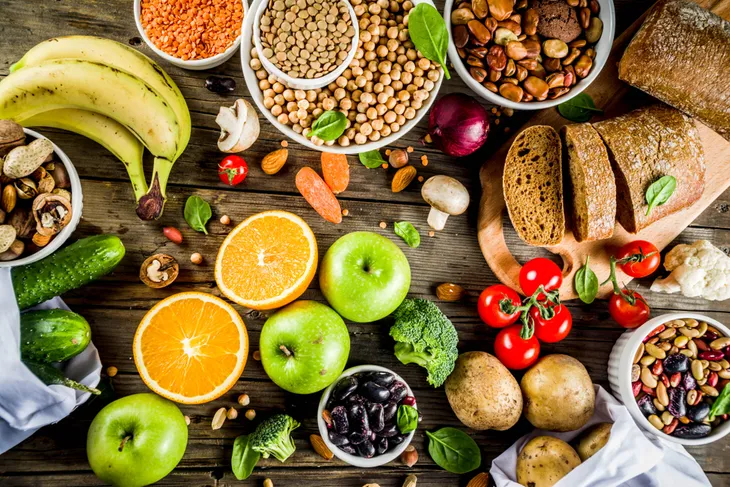Angela is a 54-year-old mother of two living with Type 2 diabetes in a small apartment in Guelph, Ont. Despite steady access to health care and a physician who encourages regular exercise and healthy eating, Angela’s complications have worsened in recent years. These complications cause mobility challenges, sometimes rendering her unable to leave the house.
Angela blames her poor diet. Due to her limited income, she frequently misses meals, goes some days without food and can often only afford nutrient-poor (but more affordable) foods.
Angela is classified as severely food insecure, which means she is one of more than 4.4 million people in Canada who are unable to acquire a diet of sufficient quality or quantity. Food insecurity is a public health crisis in Canada that has worsened during the COVID-19 pandemic.
During one of Angela’s recent visits to the Guelph Community Health Centre, a nurse practitioner surprised her with a new “prescription” for fresh fruits and vegetables. The prescription included weekly $40 vouchers that could be spent on fruits and vegetables at a local farmer’s market. Speaking after 12 weeks of enrolment, Angela expressed gratitude for the initiative.
“The program’s fantastic,” Angela said, “I’m eating a diet with a lot more fruits and vegetables and proteins, which is so good for me when I’m trying to get my diabetes under control.”
Social prescribing
Food prescriptions are part of a broader concept of social prescribing. Pioneered in the United Kingdom and growing in popularity in the United States and Canada, social prescriptions are issued by health-care practitioners to provide patients with non-pharmaceutical interventions, including dance classes, walking groups, volunteer work, art lessons and, of course, fresh fruits and vegetables.
The rise of food prescriptions has been particularly pronounced in the U.S., largely driven by not-for-profits and the 2018 Federal Farm Bill, which provided US$25 million to support produce prescription programs across the country.
In Canada, food prescriptions have been slower to gain traction, with independent community health centres, regional not-for-profits and researchers implementing produce prescriptions in partnership with allied health professionals in a more localized and unco-ordinated manner.
Our interdisciplinary health research team has collaborated with the Guelph Community Health Centre since 2019 to implement and evaluate multiple phases of a food prescription program. Food security is important to disease prevention and management, so it makes sense that health-care practitioners should be able to prescribe healthy foods and reduce barriers to healthier diets.
As exemplified by Angela’s experiences, preliminary results are promising. Participants report improved food security and increased consumption of fruits and vegetables. Meanwhile, during interviews, patients perceived the program to reduce financial stress and improve health outcomes.
And yet, food prescriptions should not be immune to scrutiny. One question is whether such initiatives respect and honour people “as people.”
Do food prescriptions trivialize the suffering of food insecurity and ignore its underlying determinants, which are often rooted in poverty, mental health, substance use, race and racism and systemic oppression?
Do they leverage the power differential between practitioners and patients to coerce patients into making different food choices, thereby eroding patients’ sense of control over their own health decisions?
Do they promote the false dichotomy of “good” and “bad” foods and reinforce the stigmatization of fat bodies in the health-care system?
Why not cash?
If the health-care system can provide vouchers for food, why not just prescribe cash? Cash transfers can empower recipients by providing choice and shifting the balance of power in favour of recipients. By contrast, providing food vouchers for restricted items might be considered paternalistic, limiting choice and assuming the best interests of recipients on their behalf.
The cash versus food debate has played out repeatedly in social and economic policy spheres, especially in academia and the conference rooms of the World Bank and the Food and Agriculture Organization of the United Nations. The growing popularity of food prescriptions should trigger a revival of this debate, but re-centred on the focal question: How can health-care systems best address food insecurity?
The medicalization of food
Hippocrates supposedly said, “Let food be thy medicine and let thy medicine be food.” Now, almost 2,400 years later, the “food is medicine framework” promotes the idea that health-care systems should offer food interventions alongside pharmaceuticals. This framework has gained popularity as an easily digestible model that plays into basic truisms about the links between food and health.
However, the medicalization of food should be cautioned. Food is more than its nutrient value. It is cultural identity. It is history. It is belonging. Food is connection to the land and dependent on the health of our planet and our society. To argue that food is a commodity to be sterilized and medicalized would undermine the true significance of food.
 Shutterstock/Syda Productions
Shutterstock/Syda ProductionsImproving access to healthy foods
Despite these questions and critiques, we are not arguing against food prescriptions. Indeed, our team facilitates food prescription programs that have been immensely beneficial for patients. Within these programs, our motivations are simple: to improve access to healthy foods for those who need it. This includes individuals like Angela who face difficult choices every day about whether they can afford a healthier diet.
We must, however, interrogate food prescriptions to determine if they are in fact the best way to leverage health systems to promote the nutritional health of low-income and other marginalized communities. And if we do provide food prescriptions, we need to recognize and be responsive to the fact that each patient — like Angela — has a different and complex relationship with food based on their own health, histories, culture, worldview, traumas and triumphs.
This article was co-authored by Abby Richter, a registered dietitian and a Master of Applied Nutrition. She is the program lead for The Fresh Food Prescription program, an initiative of The Guelph Community Health Centre.
Matthew Little, Assistant Professor, School of Public Health and Social Policy, University of Victoria; Eleah Stringer, Research assistant, School of Public Health and Social Policy, University of Victoria, and Warren Dodd, Assistant Professor, School of Public Health Sciences, University of Waterloo
![]()
This article is republished from The Conversation under a Creative Commons license. Read the original article.







